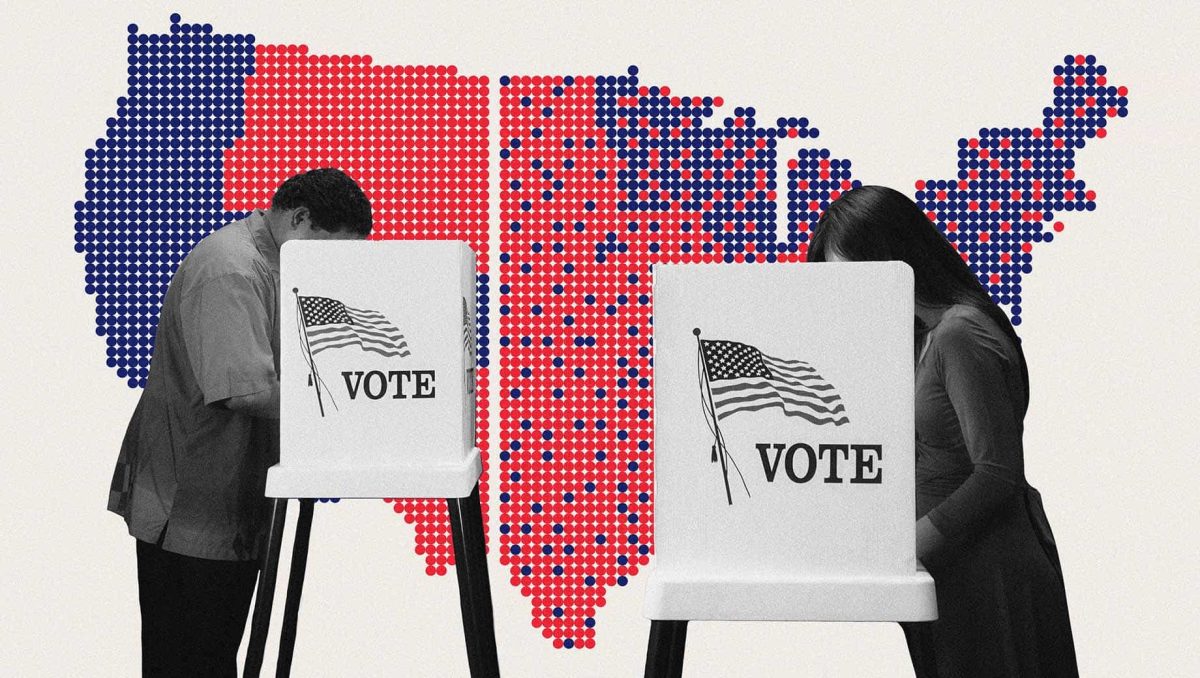The Electoral College has been used to determine the results of the U.S. presidential election since 1788, when it was established by the Founding Fathers in the U.S. Constitution.
The Electoral College allows 538 electors, representing the 50 states and the District of Columbia (D.C.), to cast votes to determine the winner of the presidential election in mid-December. In order to win, a candidate must receive at least 270 electoral votes, with each state having different numbers of electoral votes based on its number of US Representatives, which is determined by population, and its two US Senators. Since each state is guaranteed at least one US Representative and two US Senators by the Constitution, a state will have no less than three electoral votes.
While not required by the Constitution, Forty-eight of the states use a “winner takes all” system whereby the candidate with the most votes (plurality) is awarded all of that state’s electoral votes, making it very unlikely that third parties and lesser-known candidates will win any electoral votes.
The League of Women Voters notes that “third party candidates may take away votes from the major parties in a close race, which could tip the results in favor of one of the major parties.” This illustrates the power that these third parties, like the Green Party or Libertarian Party, can have in a close presidential election.
Democratic Party voters who live in a state that has a majority of registered Republican votes, and vice versa, may feel their opinions are disregarded under a winner-take-all system since their preferred candidate receives no electoral votes. This may cause some voters in that situation to consider their vote unimportant, deciding not to vote at all.
Joseph Liberti, former AP Government and Politics teacher and current Original Civic Research and Action (OCRA) teacher, states that “under the Electoral College, smaller population states have more influence, or voting power, in recent presidential elections when compared to the larger population states.”
Liberti explains that currently “Republican presidential candidates have a structural advantage in reaching a majority of electoral votes due to the fact that many smaller population states are often Republican strongholds.” He notes that “this would not be the case if the election was based on the popular vote.” While creating a party advantage was not the intention of the Founders, who strongly disliked political parties, that is the current reality.
Helen Romita (’26) draws upon this, expressing that many people who live in stronghold states “feel their vote doesn’t matter and therefore refrain from voting altogether.”
With fewer people voting in perceived non-battleground states, even more emphasis is placed on the current seven battleground states or swing states–Arizona, Georgia, Michigan, Nevada, North Carolina, Pennsylvania, and Wisconsin.
According to USAFacts, in 2020, about 66.8% of the voting-age population voted in the presidential election. The rate of participation has decreased around 14% since its peak in 1876.
While the Electoral College was created as a compromise between the election of the President by a vote in Congress and the use of a popular vote, recent controversy surrounding differences in the candidate elected under the Electoral College and the popular vote has prompted many Americans to question the legitimacy of the system.
In 2000 and 2016, George W. Bush and Donald Trump (respectively) lost the popular vote and won the presidential election due to the Electoral College.
Our country is a democracy because, as Romita points out, it “gives everyone a voice and a say in the government, from a local to a federal level.” A democracy is supposed to represent everyone’s voice, so how can a president that loses the popular vote win the presidential election?
It is simple: the electoral college is flawed, a new system is necessary to ensure the protection of our civil rights. In eliminating the electoral college, we have the potential to increase voter participation.
Nicholas Malley, current AP Government and Politics Teacher notes that “without people voting, there’s really no change,” explaining that people must vote to see change in certain policies and decisions since the people make up a democracy. The Electoral College, however, results in many individuals feeling as if their vote does count, and it has decreased the number of active voters, particularly in states where one political party dominates.
Liberti argues that depending on your preferred presidential candidate, your opinion of the Electoral College is likely to vary. He argues that the Electoral College wasn’t constructed to represent everyone’s vote but rather to be a form of indirect voting: “[it was created to] reflect each state’s preferences as determined by that state’s electors, not the voters themselves.” Many Americans, however, perceive that the U.S. is a representative democracy with the principles of majority rule. Therefore, when candidates such as Donald Trump win the White House without winning the most votes in the entire country, it can prompt questions regarding the legitimacy of the system.
As a result, Americans may perceive that the political system as illegitimate, making it harder to uphold a representative democracy. However, fair representation is also challenged by the fact that smaller states have a higher influence per voter due to the minimum of having three votes per state in the Electoral College.
This means that states with fewer people can have more of an impact on their state than those in larger population states like California and New York. This promotes inequality present within the use of the Electoral College. The solution? The Congressional District Method.
The systems used in Nebraska and Maine, the two states that don’t use the “winner takes all” policy, have a potential solution to representing everyone’s vote. This system gives a chance for the losing candidate to still earn an electoral vote if they win in a particular congressional district.
This system allows for multiple parties to earn an electoral vote in individual states, encouraging participation as citizens understand that their vote can count. This, in turn, can benefit smaller parties’ and losing parties’ presidential candidates by preventing dominating parties from receiving the entirety of a state’s electoral votes.
Read the rest of the 2024 Election Special Editon here










